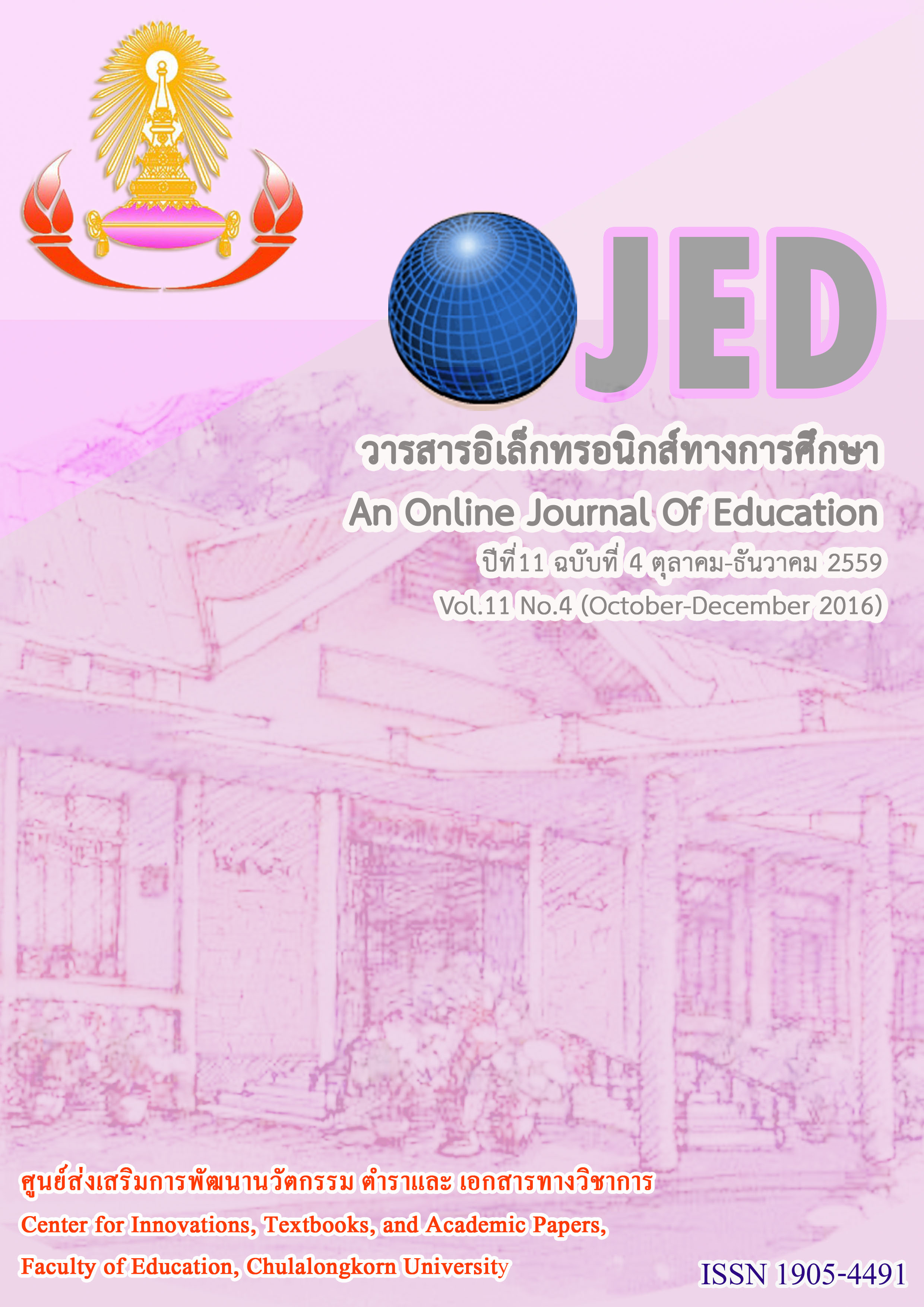การเปรียบเทียบความเที่ยงของแบบสอบวัดความสามารถในการแก้ปัญหาอย่างสร้างสรรค์ ทางคณิตศาสตร์: การประยุกต์ใช้ทฤษฎีการสรุปอ้างอิงความน่าเชื่อถือของผลการวัด COMPARISON OF TEST RELIABILITY FOR MEASURING MATHEMATICS CREATIVE PROBLEM SOLVING ABILITY: AN APPLICATION OF GENERALIZABILITY THEORY
Keywords:
MATHEMATICS CREATIVE PROBLEM SOLVING ABILLITY, GENERALIZABILITY THEORYAbstract
Abstract
The purposes of this study were 1) to estimate variance component for mathematics creative problem solving ability test in Generalizability Study 2) to estimate G-coefficient in Two-Facet Crossed Design or pxixr design and Two-Facet Nested Design or px(i:r) design and 3) to compare the test reliability for measuring mathematics creative problem solving ability using the different design in D-Study the different number of item situation and the rater used the application to Generalizability Theory. Sample were 120 students in the ninth grade. Research instruments were mathematics creative problem solving ability test. Basic Statistics, Pearson’s Product Moment Correlation intra rater& inter rater and G-Coefficient were used to analyze the data. It was found that 1) The highest of the estimated variance components is σ2pi. 2) Both of the Two-Facet Crossed Design and Two-Facet Nested Design have more G-Coefficient there were more numbers of items situation and the raters. 3) The result of the comparison of the test reliability for measuring mathematics creative problem solving ability found that the using under the different design in D-Study effected to the reliability of the test. The Two-Facet Nested Design or px(i:r) design has G-Coefficient higher than Two-Facet Crossed Design or pxixr design for example ; 1 raters for 7 items in pxixr design and 2 raters for 5 items in px(i:r) design for the least which we has the G-Coefficient for Relative Designs (ρ2δ) > 0.80 .



